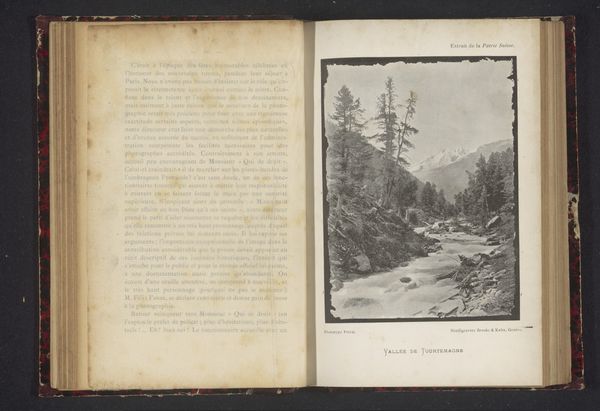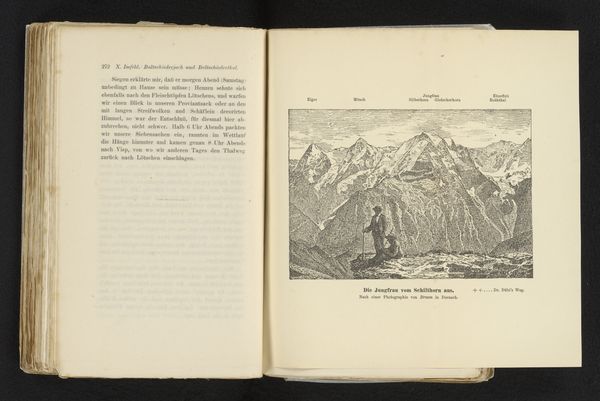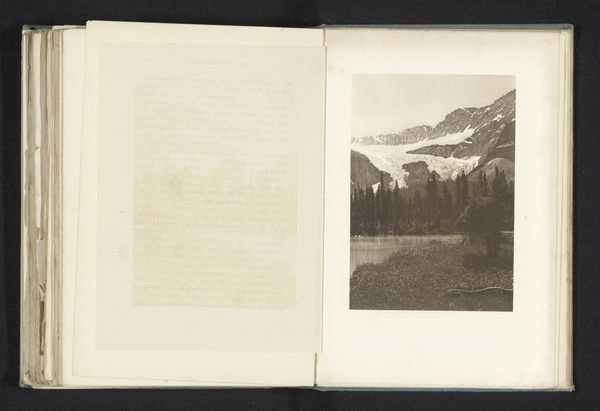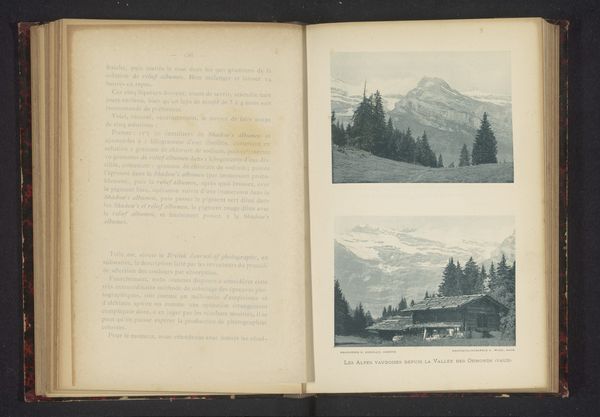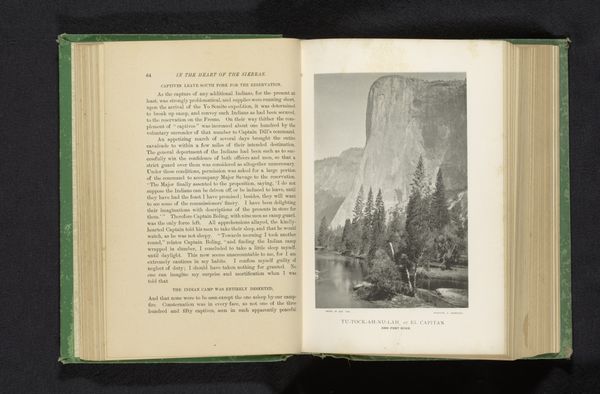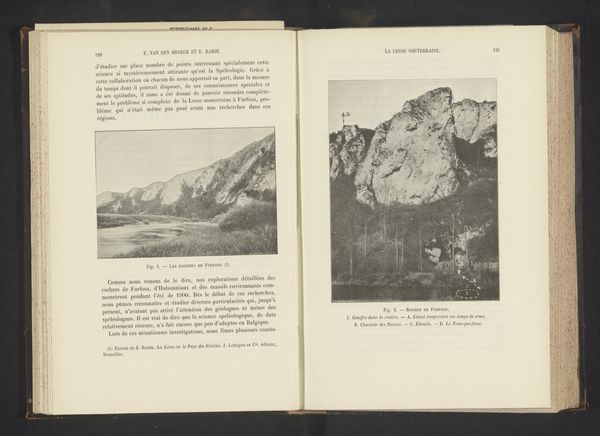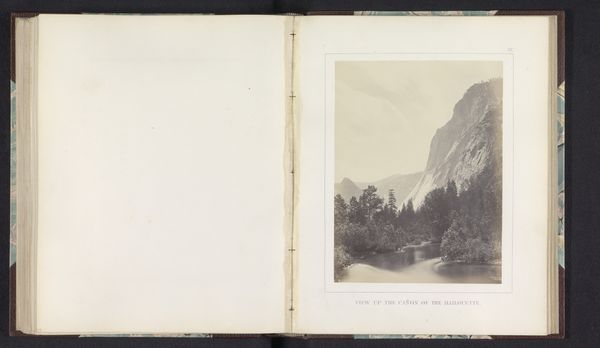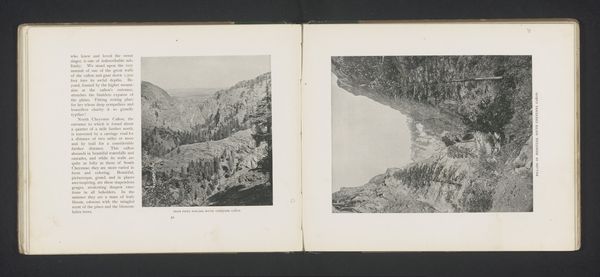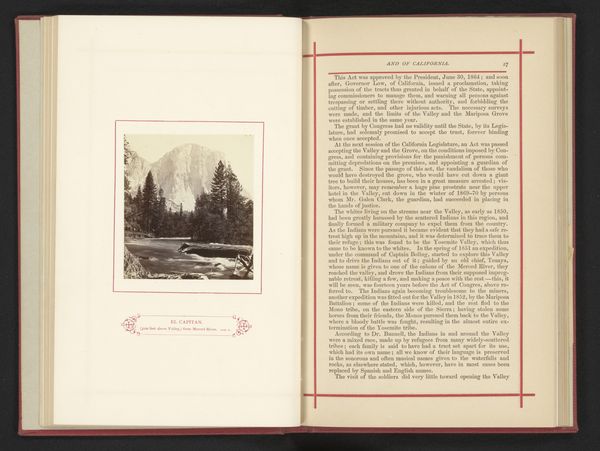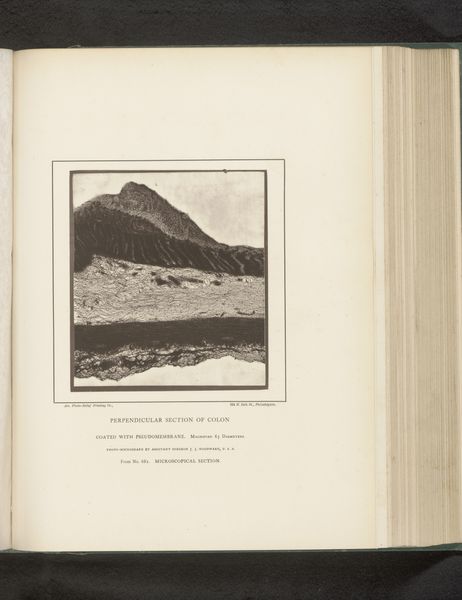
Reproductie van een tekening van een gezicht op de berg Diablerets in de Alpen, Zwitserland before 1882
0:00
0:00
Dimensions: height 117 mm, width 180 mm
Copyright: Rijks Museum: Open Domain
Curator: There's something profoundly somber about this composition. The monochromatic tones and stark contrast evoke a sense of solitude. Editor: Indeed. We’re looking at a reproduction of a drawing called "Reproductie van een tekening van een gezicht op de berg Diablerets in de Alpen, Zwitserland," made before 1882 by an anonymous artist. It’s an engraving printed onto the page of a book. This was likely made to allow widespread circulation of alpine views to a reading public. Curator: The labor involved in creating such a detailed engraving! One can imagine the artisan meticulously carving away at the printing plate to achieve such a precise rendering. How does its mass production intersect with Romanticism's ideals about the sublime and original experience? Editor: Precisely. The Romantic period fetishized untouched nature and unique individual experiences of it. The artist, whoever they were, worked in an industrial context to reproduce these awe-inspiring sights to reinforce those themes. They’re capitalizing on and also helping to build what we now understand as "landscape tourism". Curator: Considering its function as a commercially reproducible print, what was the paper quality like? Did its accessibility translate to its wider societal appeal and influence the culture's visual representation of Switzerland? Editor: Well, thinking about that reproduction also gives rise to questions around the very specific viewpoint we are granted: who is it that gets to see this “untouched” sublime landscape, and from what position? Even the clean lines of the printed lines create an image for widespread, bourgeois consumption. Curator: The contrast in scale between the small, rudimentary cabin and the vastness of the mountain really highlights humanity's fragility in the face of nature’s grandeur. It’s interesting to consider what sort of dyes, if any, they may have employed to produce such clear dark lines during mass production. Editor: Absolutely. It reflects a Romantic-era yearning for an idealized, even fictionalized, relationship with nature in a rapidly industrializing world. It leaves me pondering the complex layers of identity and intention embedded within this engraving.
Comments
No comments
Be the first to comment and join the conversation on the ultimate creative platform.

